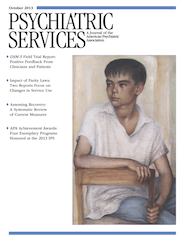Prescription of Psychiatric Medications and Polypharmacy in the LAMS Cohort
Abstract
Objective
This study evaluated demographic and clinical correlates and predictors of polypharmacy at baseline assessment in the Longitudinal Assessment of Manic Symptoms (LAMS) sample, a cohort of children age six to 12 years at their first outpatient mental health visit at university-affiliated clinics.
Methods
Use of medications in four classes (mood stabilizers, antidepressants, antipsychotics, and stimulants) was assessed, and the Service Assessment for Children and Adolescents classified lifetime and current use of various services. Analyses examined correlates of the number of medications prescribed and odds of polypharmacy, defined as use of two or more concurrent medications.
Results
In the total sample, 201 of 698 participants (29%) were prescribed two or more medications. These participants had lower Children’s Global Assessment Scale scores, more comorbid disorders, and higher baseline parent-reported mood symptoms than those prescribed no or one medication. White youths were three times as likely as nonwhite youths to be receiving two or more psychotropics, even after adjustment for other demographic and clinical characteristics. Of 262 participants (38% of sample) not being treated with medications, 252 (96%) had a diagnosis of at least one psychiatric disorder (74% had two or more).
Conclusions
Findings suggest that patients with greater severity and comorbidity were more likely to receive two or more medications. However, 38% of these children with serious disorders were not receiving psychotropic medication at the time of this assessment. Results counter findings suggesting overtreatment with medications of children with psychiatric disorders in the community.



